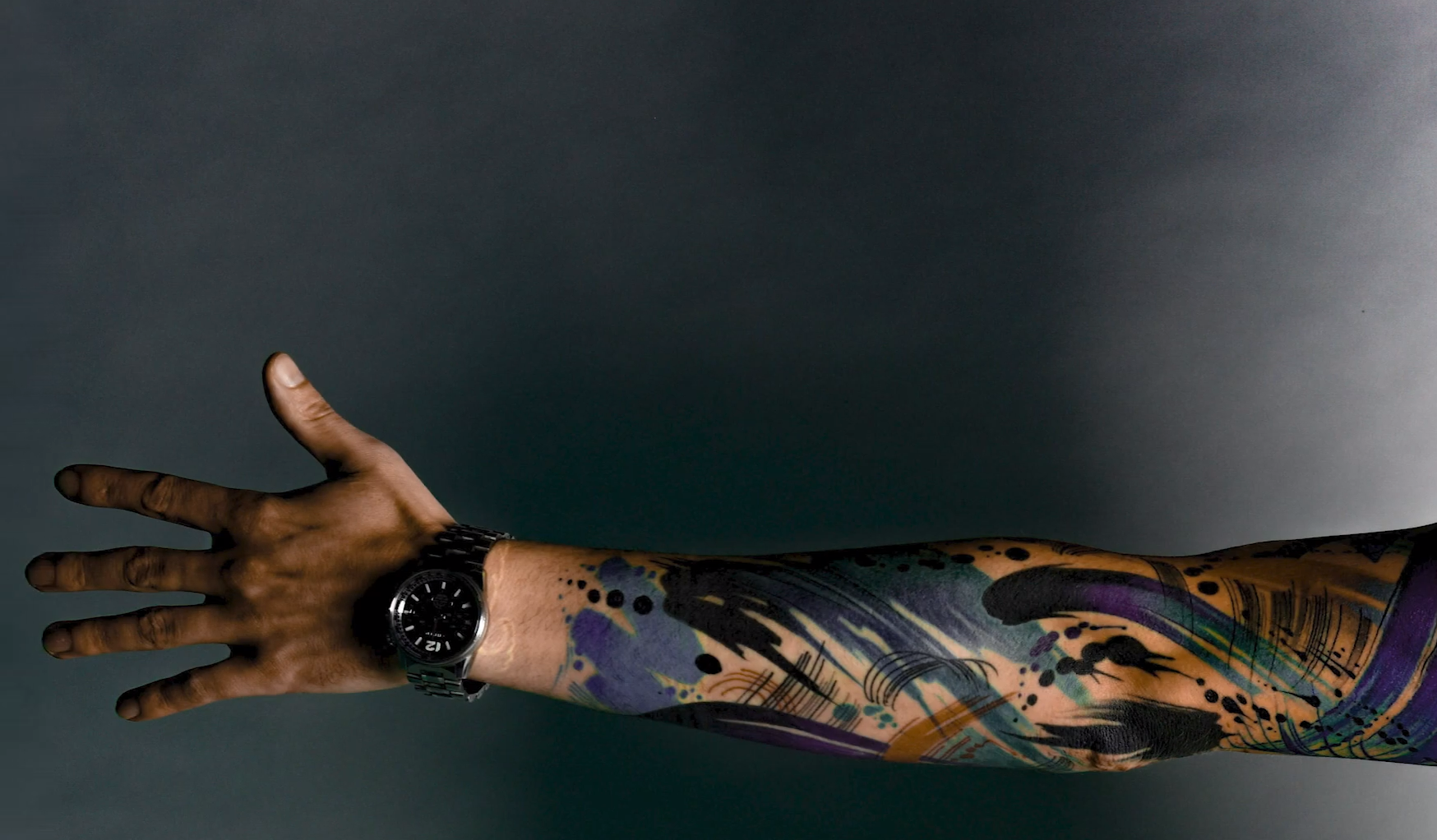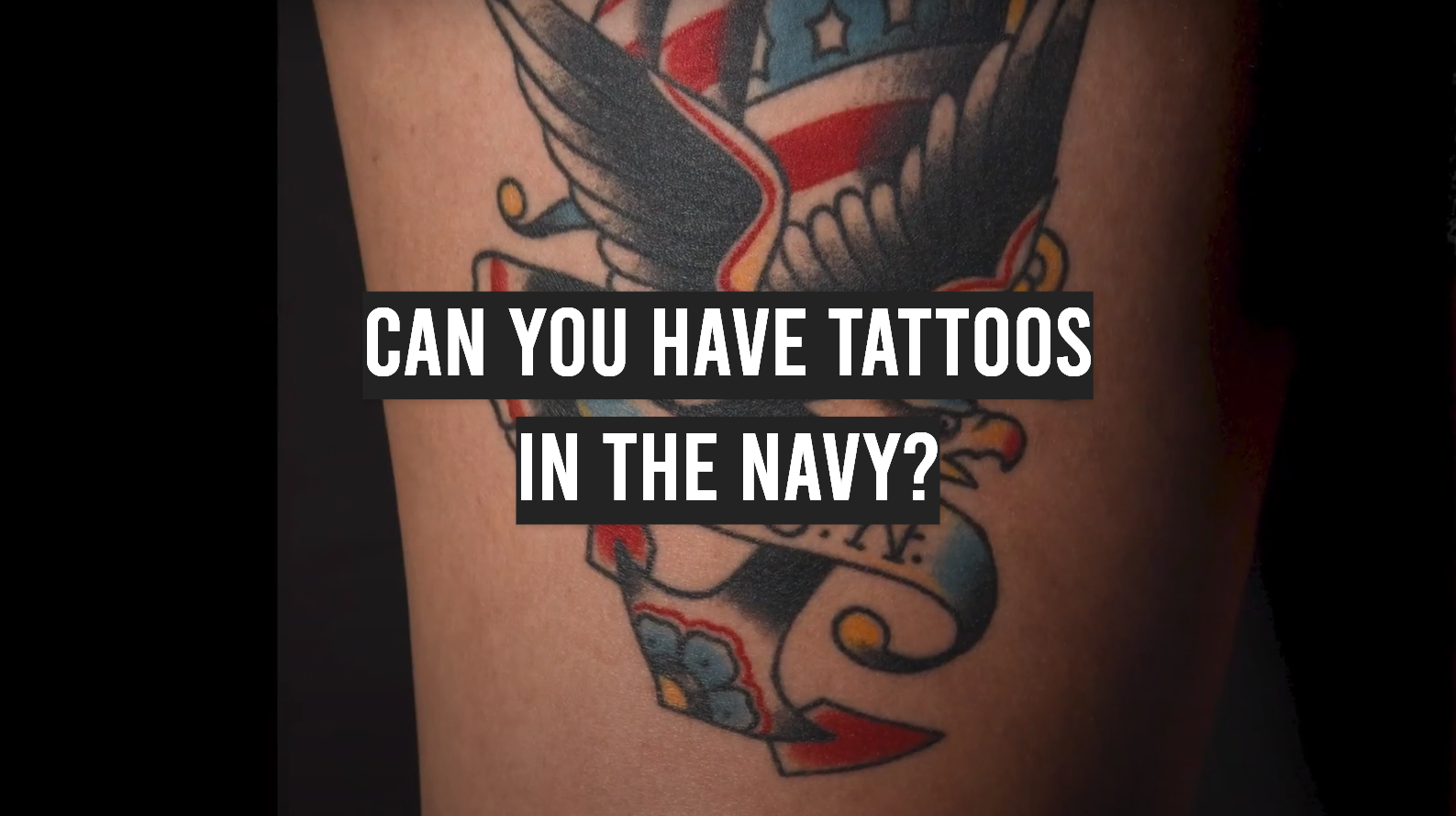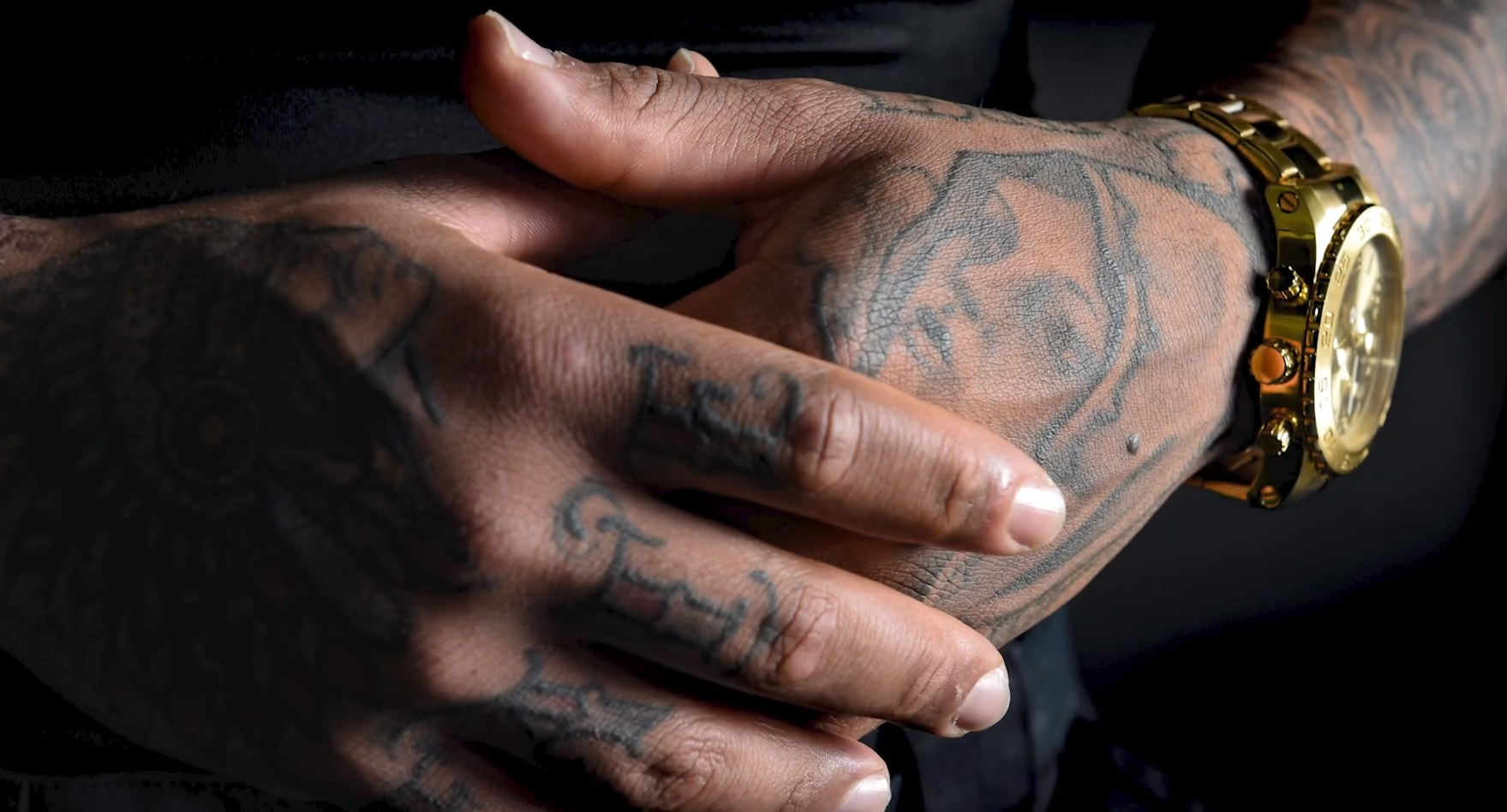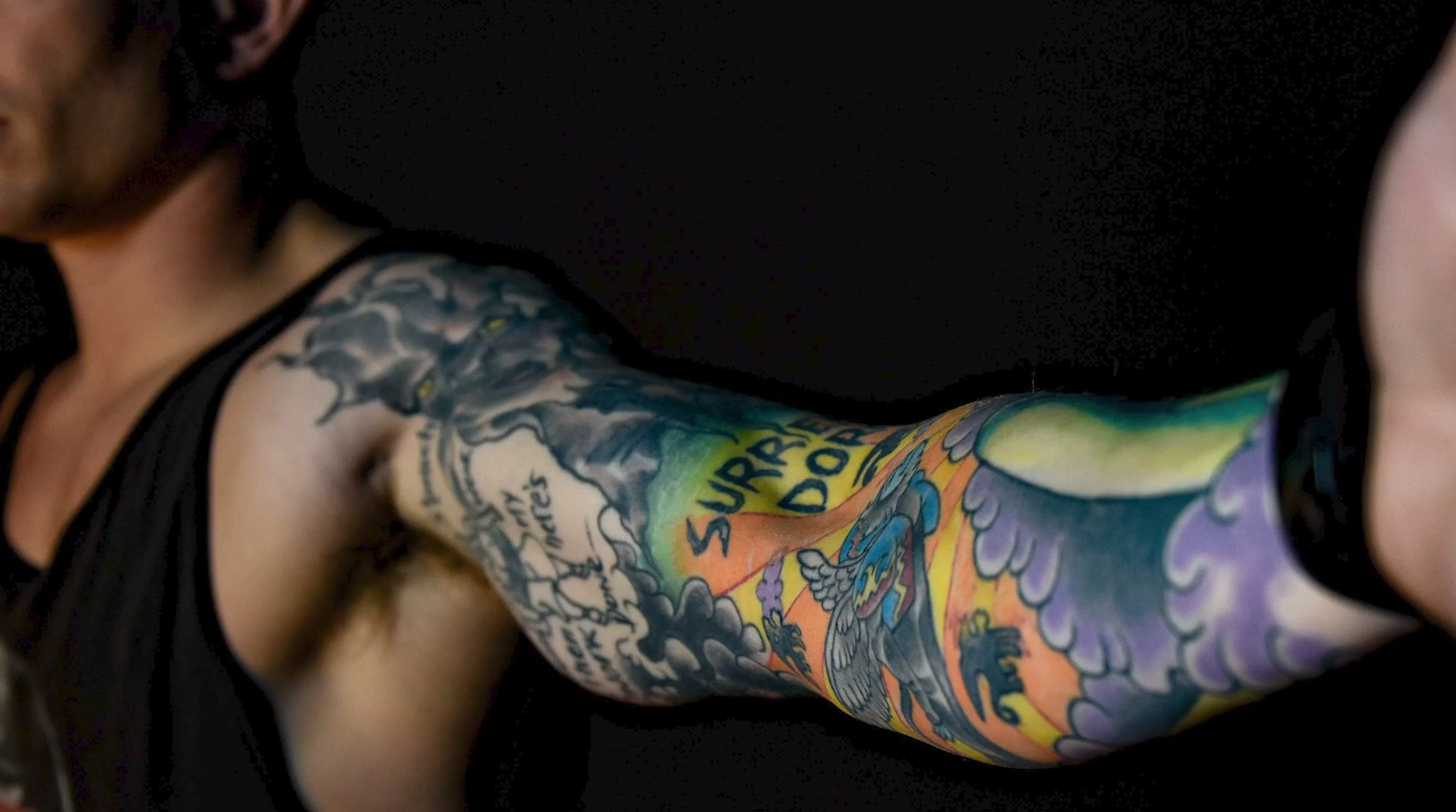Thinking of joining the Navy? If so, you must first consider one important question: do tattoos have a place in the Navy? Many potential enlistees ponder this very issue when considering their application process. Fortunately, there are some clear requirements and regulations about what kind of body art can be worn in the United States military. So, if you want to know whether or not your ink is allowed by the U.S Navy – read on! This blog post will provide an overview of all things related to tattoos within America’s naval forces – including any rules and regulations that apply towards body art for applicants seeking employment in navy-related occupations. Get ready to understand everything necessary about ‘tattoos and the navy’ as we explore this topic further!
What Is the Navy’s Policy on Tattoos?
The Navy has strict guidelines about tattoos. Permanent body art is only allowed on the arms below the elbow and the legs below the knee, and there are no exceptions for sailors in dress uniforms or ceremonial duties. The Navy also prohibits any tattoos that might be considered offensive, including those that could be interpreted as sexist, racist, extremist, or indecent.
Additionally, tattoos may not cover more than 25 percent of an exposed body part. Sailors should remember that all permanent body modifications must follow these regulations; even if a tattoo is placed somewhere else on their body, it will need to be covered up while they’re wearing a uniform. [1]
Are There Any Exceptions to the Navy’s Policy on Tattoos?
Yes, there are certain exceptions to the Navy’s policy on tattoos. Sailors who already have tattoos when they enter the service can be grandfathered in with a waiver. The tattoo must meet specific criteria and require approval from higher-level officers. Only sailors that fall into certain career fields may qualify for waivers, including nuclear power technicians, linguists, religious programs specialists, and special operations personnel.
Ultimately, any sailor seeking a waiver should speak with their commanding officer for further information and instruction. It’s important to note that the waiver process can take a long time and has no guarantee of approval.
What Other Factors Come into Play With Regard to Tattoos in the Navy?
When considering tattoos in the Navy, there are a few other factors that may come into play. The first is location; tattoos visible while in uniform must be placed on areas of the body where they can be covered by properly fitting uniforms or civilian clothes. This means that tattoos should not usually be placed on the head, face, neck or hands.
In addition to location restrictions, all tattoos must also meet Navy standards for appropriate content and design. These include prohibitions against having any offensive tattoos; those depicting alcohol, drugs, hate symbols and any material that could bring discredit to the Navy or its personnel. Furthermore, all tattoos must have a non-inflammatory message as determined by authorized command personnel. [2]

Finally, it’s important to note that the Navy reserves the right to reject any tattoos it deems inappropriate or unacceptable. Any personnel found to be in violation of tattoo regulations may face disciplinary action, including loss of rank and/or separation from the Navy. For these reasons, it’s important for prospective sailors to ensure their tattoos comply with all Navy standards before signing up. This will help avoid potential legal trouble down the line.
So remember: when considering getting a tattoo in the service of the Navy, make sure you understand and follow all policy restrictions in order to stay out of trouble.
How Does Having a Tattoo Affect Your Chances of Joining the Navy?
Having tattoos can impact your chances of joining the Navy. Tattoos that are sexually explicit, racist, or offensive are prohibited by Navy regulations and may disqualify you from enlistment. Additionally, visible tattoos on the neck, face, head (including under the hairline), as well as any other visible location on hands and wrists that exceed 1/4 inch in width must also be declared during screening. The Navy has specific guidelines for applicants with tattoos; these rules vary depending on size, type and placement of a tattoo. For example, any tattoo located below the elbow or knee must not exceed two inches in width. All applicants must fill out a DD 2808 form to declare their tattoos prior to being accepted into the Navy.
Ultimately, any potential recruit should consider how having a visible tattoo could potentially impact their career in the Navy before they get inked. It is important to remember that any tattoos deemed offensive or inappropriate by Navy regulations will disqualify you from enlistment and result in your application being denied even if you meet all other criteria. Therefore, it is wise to think carefully before getting a tattoo if you are considering a future in the Navy. [3]
What Should You Consider Before Getting a Tattoo While Serving In The Navy?
Getting a tattoo can be an exciting prospect, especially if you’re looking to make a bold statement about your identity or show off an important symbol. However, before getting any kind of ink done while serving in the Navy, it is important to understand the restrictions that are set in place by the military.
Finally, it is important to understand that any visible tattoos you have can carry a certain level of judgment and stigma from other members of the Navy. While these perceptions may not be fair or accurate, it is important to consider how your appearance could affect those around you. Additionally, if you’re aiming for a promotion within the Navy later on down the line, having visible tattoos does not bode well for future advancement opportunities.

Does the Navy Offer Financial Assistance for Tattoo Removal?
Yes, the Navy does offer financial assistance for tattoo removal. The Navy is aware that tattoos may have been acquired during a sailor’s formative years or during a period of life when personal judgment was impaired. If needed, sailors can receive up to $1,000 in reimbursement for the cost of professional tattoo removal services. Service members are eligible to receive this financial assistance regardless of rank or type of service. However, sailors must meet certain criteria before they qualify for assistance with tattoo removal costs. They will need to show that their tattoos are negatively affecting their current performance as a Sailor and that it will improve after undergoing treatment.
The Navy is committed to helping sailors live up to the Navy’s standards of appearance and professionalism. Financial assistance with tattoo removal allows sailors to have control over their personal image and serves as an effective way to ensure they conform to military regulations. [4]
Other Navy Serving Restrictions
Besides tattoos, there are other restrictions that apply for those who want to serve in the Navy. The Navy requires recruits to be at least 17 years old and no older than 39 upon enlistment. Those under 18 must have parental consent before they can join. All recruits must also pass a physical examination, have a valid driver’s license, and successfully pass a drug test prior to entering boot camp.
Finally, if found guilty of any felony-level crime, military personnel cannot serve in the Navy and will be subject to disciplinary action.
It is important for potential recruits to understand all of the restrictions that come with joining the military, including those related to tattoos. Knowing these rules can help ensure they are prepared and make an informed decision when deciding to join or not.
Why Are Tattoos Popular In The Military?
Tattoos have become popular in the military for many reasons. They are seen as a form of self-expression and can be used to symbolize different aspects of the service member’s life or beliefs. Tattooing is also popular among service members as it is seen as a mark of courage and strength.
With these changes, many service members are choosing to get tattoos as a way of expressing their identity and commitment to the Navy. While regulations can vary from unit to unit, sailors may be permitted to have visible tattoos on certain parts of the body depending on their branch and station.

Informal rules for tattooing in the Navy tend to focus on avoiding offensive images or words that could reflect negatively upon the service. The majority of designs should also not be extreme or large enough that they limit a sailor’s mobility while in uniform. Finally, it is important for all service members to remember that whatever design they choose should represent them with honor and dignity, both when in uniform and out. [5]
What Tattoo Do Sailors Get?
Sailors in the Navy have a long tradition of getting tattoos. While there are regulations that prohibit certain types of tattoos, most tattoo designs are permitted. The most popular tattoo designs for sailors include anchors, eagles, swallows, and nautical stars. Other common themes include marine life (such as dolphins), patriotic symbols (like flags), and ships or boats. Sailors often get shipmates’ names and initials incorporated into their tattoos to commemorate meaningful friendships they’ve made during their time in service. Some even choose to get dates of deployments added as well, such as the date they joined the Navy or the date they completed a specific mission. Whatever design sailors choose, it is important that it meets all Navy guidelines so that it can be worn with pride.
No matter what tattoo a sailor gets, it should always honor the Navy and symbolize strength, courage, and dedication to duty. Tattoos should never be offensive or contain profanity; any tattoos that are deemed inappropriate will not be permitted in the Navy. Additionally, all tattoos must meet regulations regarding size, location on the body, and colors used (tattoos may only use black ink). In summary, sailors in the Navy can get tattoos as long as they follow all guidelines set by their commanding officer and ensure that their design is respectful of the military. [6]
FAQ
Can you join the Navy if you have tattoos?
Yes, you can join the Navy with tattoos. However, certain regulations must be followed regarding the size and placement of your tattoos. Tattoos on your neck or head are not allowed. Additionally, any single tattoo larger than 25 square inches is prohibited. For each arm sleeve (upper or lower), the total combined area of all tattoos cannot exceed 40 square inches. Lastly, all offensive tattoos must be covered at all times while in uniform or in public settings while on duty.
Can you get additional tattoos while in the Navy?
Yes, you may get additional tattoos after joining the Navy as long as they meet current regulations regarding placement and size restrictions. If a tattoo does not meet these requirements it will need to be modified or removed before enlistment. Additionally, all tattoos must be in good taste and not contain any offensive material.
Can I get a tattoo removed while in the Navy?
Yes, you can get a tattoo removed while serving in the Navy. The procedure will need to be approved by your Commanding Officer in order for it to be covered by TRICARE. However, there may still be out-of-pocket costs associated with the removal depending on your specific situation.
Do tattoos affect reenlistment in the Navy?
No, tattoos do not automatically disqualify you from being able to reenlist in the Navy. However, your Commanding Officer has the final say regarding if any of your tattoos are deemed inappropriate or offensive and if they would affect your ability to reenlist.
Are there any exceptions to the tattoo policy in the Navy?
Yes, there are some exceptions to the Navy’s tattoo policy for certain situations and individuals. For example, religious tattoos may be allowed if approved by your Commanding Officer. Additionally, those with existing tattoos that do not meet regulations may be able to receive a waiver from their Commanding Officer depending on the circumstances. Lastly, service members with excessive or offensive tattoos can petition to have them removed while in the military.
What tattoos are not allowed in the Navy?
The Navy has very specific regulations regarding the types of tattoos that are not allowed. Any tattoos or brands that are obscene, discriminatingly offensive, prejudicial to good order and discipline, or associated with any extremist group are strictly prohibited for all service members. Additionally, tattoos on the head, face, neck, and hands (above the wrist) must be covered at all times while in uniform; no exceptions. Service members who currently have these visible tattoos will need to transfer out of their current unit to one which does not require a uniform. Finally, single-letter monograms such as “MOM,” words with multiple meanings or implications such as “TRUST” and symbols associated with organized crime or hate groups are also disallowed.
What military branches don’t allow tattoos?
The Navy is not the only branch of the military that has regulations on tattoos. The Army, Air Force, Marines and Coast Guard all have rules and regulations for tattoos that service members must adhere to. Generally speaking, these regulations are similar to those laid out by the Navy, with slight variations in terms of what types of tattoos are allowed and where they can be placed. As always, it is important to check with your unit or Commanding Officer prior to getting any new tattoos or body art. It’s also important for service members considering a career in the armed forces to consider their long-term goals and plan accordingly if they wish to remain in uniform. Tattoos can limit career opportunities within the military as some commands may not allow visible tattoos, so careful consideration is essential. Finally, it is important to remember that all service members are held to a higher standard and should strive to maintain the highest level of professionalism both on and off duty.
Will the military pay for tattoo removal?
The military does not pay for tattoo removal, however certain branches may offer re-enlistment bonuses to those who get tattoos removed. The Navy does offer a waiver in some instances where active duty service members have been identified as having an inappropriate tattoo that violates regulations. Waivers are generally considered on a case-by-case basis and must satisfy the commanding officer’s judgment of health, hygiene, good order, morale, and discipline within the command. Those seeking a waiver should consult their chain of command for details. In addition to individual waivers, the Navy also offers voluntary cosmetic surgery programs through select commands or medical treatment facilities (MTFs). These programs usually involve laser or other approved methods of surgically removing tattoos. When available, those interested in removal should contact their local MTF for more information. It is important to note that not all tattoos are eligible to be removed through these programs, and there may be a waiting list for services.
Do Marines allow tattoos?
Yes, the Marine Corps does allow tattoos. The Marine Corps recently revised their guidelines for tattoos in 2018 and from then on, soldiers are allowed to have almost any type of tattoo as long as it is not offensive or visible while wearing the Service Uniform. However, keep in mind that only certain areas can be tattooed – no arm or neck tattoos are permitted and all ink must be 2 inches above the crease of your elbow. Additionally, there are regulations for how many tattoos you can have below the elbow; no more than four total and they all cannot exceed 25% of exposed area on arms/hands. Like the Navy, Marines with existing tattoos may need to provide documentation such as a photograph of their tattoo(s) when enlisting in order to be approved. Finally, tattoos must not depict anything that could be considered extremist, indecent, sexist, or racist.
Can you have tattoos in the FBI?
Yes, the FBI does allow tattoos. The FBI’s policy on tattoos is similar to the Navy and Marine Corps regulations, as it allows for most types of tattoos. However, any tattoos that are considered “extremist, indecent, sexist or racist” will not be allowed. Similarly, no arm or neck tattoos are permitted and all ink must be 2 inches above the crease of your elbow. There is also a limit on how many total tattoos you can have below the elbow; no more than four total and they cannot exceed 25% of exposed area on arms/hands. Those with existing tattoos may need to provide documentation such as a photograph of their tattoo(s) when applying to be approved. Lastly, all visible body ink must be covered when wearing the FBI uniform.
Useful Video: Tattoo culture in U.S. Navy
Conclusion
In conclusion, tattoos in the Navy are allowed but there are rules and regulations that must be followed. The content of the tattoo as well as its size, location, and visibility all factor into whether it is permitted or not. Sailors should consult their commanding officer to find out if their desired tattoo meets the requirements set forth by the Navy before they get one. Ultimately, getting a tattoo is a personal choice and Sailors should take care when deciding what body art they want to represent them for years to come.
References:
- https://removery.com/tattoo-policies/military/us-navy-tattoo-policy/
- https://www.americantattoosociety.com/us-navy-tattoo-policy/
- https://navalofficerrecruiter.com/can-navy-officers-have-tattoos/
- https://allhands.navy.mil/Stories/Display-Story/Article/1840142/new-tattoo-policy/
- https://www.navytimes.com/news/your-navy/2016/05/08/the-u-s-navy-s-new-tattoo-rules-explained/
- https://www.fox13news.com/news/us-army-tattoo-policy-2022-military-branch-rules-marines-coast-guard-navy














Leave a Review